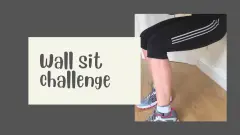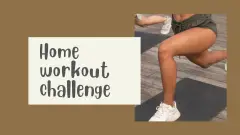All you need for this wall workout challenge is a small space and a wall. It will work all your leg muscles, glutes, upper body and core. The challenge starts with an easy 5 reps of everything and 10 second wall sit and builds up to 25 reps of everything and 100 second wall sit.
Wall workout challenge chart
The chart below gives you the repetitions for exercises #1-4 and the hold times for the wall sit. For the leg exercises, the number of repetitions is for each leg. Exercise instructions are below the chart.
Please read these safety guidelines before you start. Please also note that as the wall sit exercise involves static contraction (that is, you hold your muscles in one position), it is not advisable for anyone with high blood pressure.
If you’re working on a smooth floor surface, make sure you’re not wearing footwear that could slip (like socks).
Do the warm up exercise shown to warm up your muscles and joints before the challenge each day.
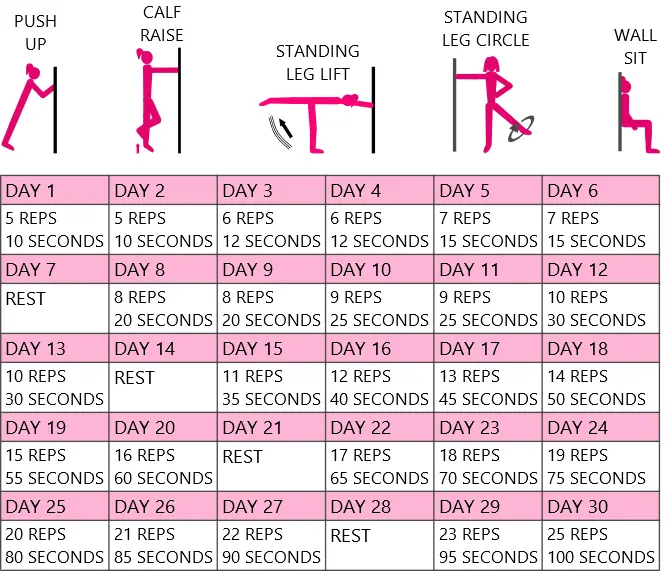
Exercise instructions
Warm up exercises
Do 5 arm circles and 16 knee lifts
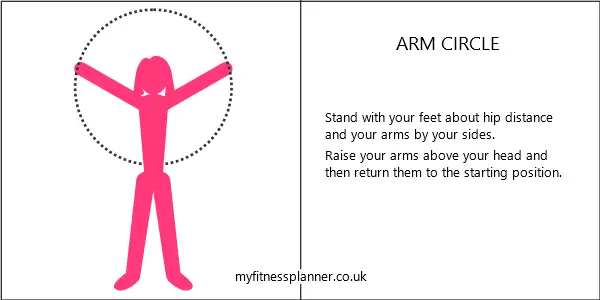
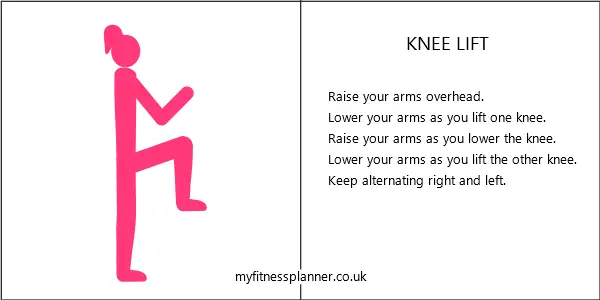
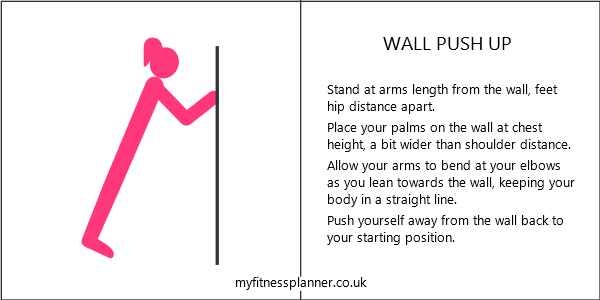
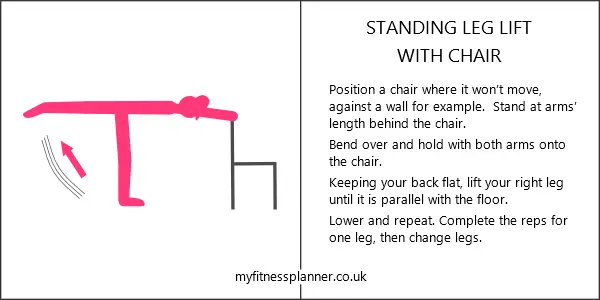
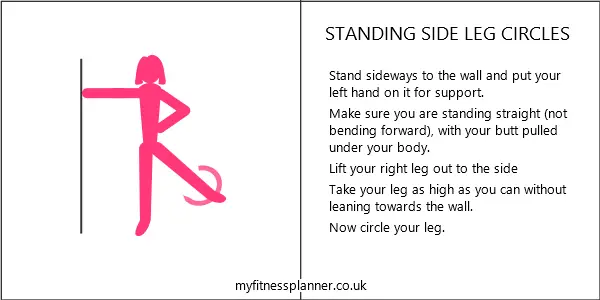

Squats vs lunges – what are the differences?
Squats and lunges are two of the most popular lower body exercises for building strength and muscle. Both exercises have their own benefits and drawbacks, which is why it’s good to do both.
Squats
Squats are a compound exercise that works multiple muscle groups at once, including the quads, hamstrings, glutes, and core. They work both legs at once are considered a functional exercise, as it’s a natural movement that occurs in every day life – sitting down on a chair for example. Limitations are that lack of flexibility in the calves can make it difficult to achieve a full range of movement (ie get your thigh parallel with the floor) and that they can be uncomfortable for anyone with knee problems.
Lunges
Lunges are another compound exercise that works the quads, hamstrings, glutes, and core. They are a unilateral exercise, which means they work one leg at a time. This can help to improve imbalances between the two legs. Lunges also require more balance and coordination, which means they have more of a core training effect than squats. However, it’s harder to achieve correct form with squats and form can deteriorate with multiple reps as your legs get tired.
Get the wall workout challenge PDF printable
Sign up for My Fitness Planner updates and get the free printable download link e-mailed to you:
After you sign up, you’ll get 2 e-mails, one will have a link to your printable download and the other will be a welcome e-mail.
If the e-mails haven’t turned up within a few minutes, please check your junk folder, as some service providers have very strict filters.
Related to wall workout challenge
Challenge FAQs
The first day of the challenge should feel like it needs a bit of effort, but not too much. If you really struggle with day 1, then you probably won’t get through the challenge. The idea with the challenges on this site is that the first few days get you used to the exercises and the daily habit. Usually about halfway through the challenge the effort levels start to increase more quickly.
Avoid challenges that increase effort levels very quickly – they’re simply not realistic. It’s unlikely that, for example, you would be able to increase how many squats you are able to do by 10 a day for 30 days, or increase your plank hold time by 10 seconds a day for 30 days.
Last Updated on: April 24, 2022In general, allowing muscles 48 hours between workouts is good because it gives our bodies time to recover and adapt. Challenges are generally short workouts and for a limited period of time (usually 30 days), so not having many rest days won’t be a problem. With challenges that alternate exercises each day, it’s not an issue, because you’re using different muscles.
Last Updated on: April 24, 2022Fitness improvements don’t always happen in a predictable way. Sometimes we’re just not as strong or energetic for no apparent reason, or we hit a plateau. If you get to a point where you’re struggling to complete the day’s challenge, you can try one of the following:
- Take a couple of days off and start again where you left off
- Do the challenge on alternate days rather than every day
- Instead of increasing the effort every day, stay at the same level for 2 or 3 days and then go onto the next day of the challenge
Obviously these solutions mean the challenge will last longer, but you’ll still benefit from doing it.
Last Updated on: April 24, 2022Last Updated on: September 12, 2025

